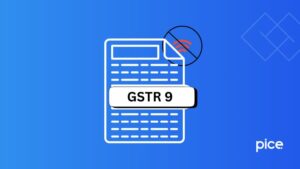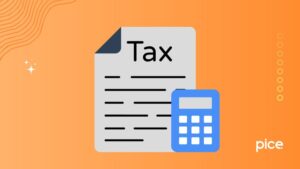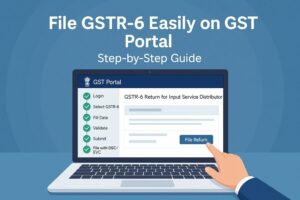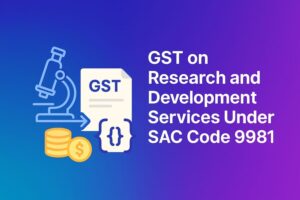Form GST RFD 07: Managing Sanctioned Refunds through Adjustment
- 18 Aug 25
- 8 mins
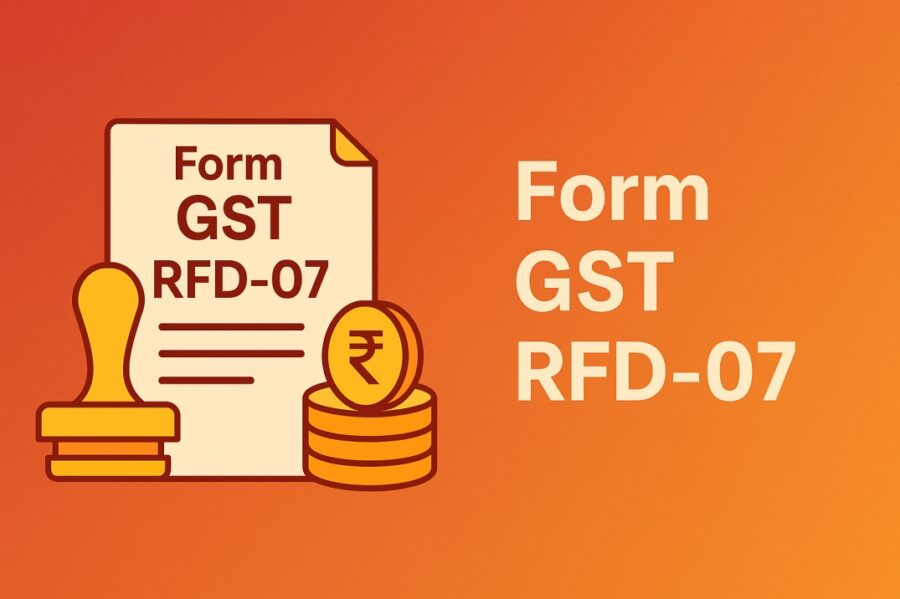
Form GST RFD 07: Managing Sanctioned Refunds through Adjustment
Key Takeaways
- Form GST RFD-07 is used in the GST refund process to adjust or withhold sanctioned refund amounts.
- RFD-07 Part A adjusts GST refunds against outstanding tax dues to recover confirmed demands.
- RFD-07 Part B temporarily withholds GST refunds due to investigations, appeals, or non-compliance.
- Tax officers issue Form GST RFD-07 after refund sanctioning through RFD-04 or RFD-06.
- Resolving issues in GST RFD-07 ensures faster release of withheld or adjusted GST refunds.
Form GST RFD-07 is an important document used in the GST refund process. Sometimes, when a taxpayer claims a refund, the government may either adjust the approved refund amount against any outstanding tax dues or temporarily withhold it for specific legal reasons.
RFD-07 helps systematically manage these situations. It has two parts: Part A allows users to adjust refunds against confirmed dues and Part B allows users to temporarily withhold the refund application. This form ensures that officials process refunds properly while also protecting government revenue in cases of non-compliance, investigations, or legal proceedings.
What is the Difference Between RFD-07 Part A and RFD-07 Part B?
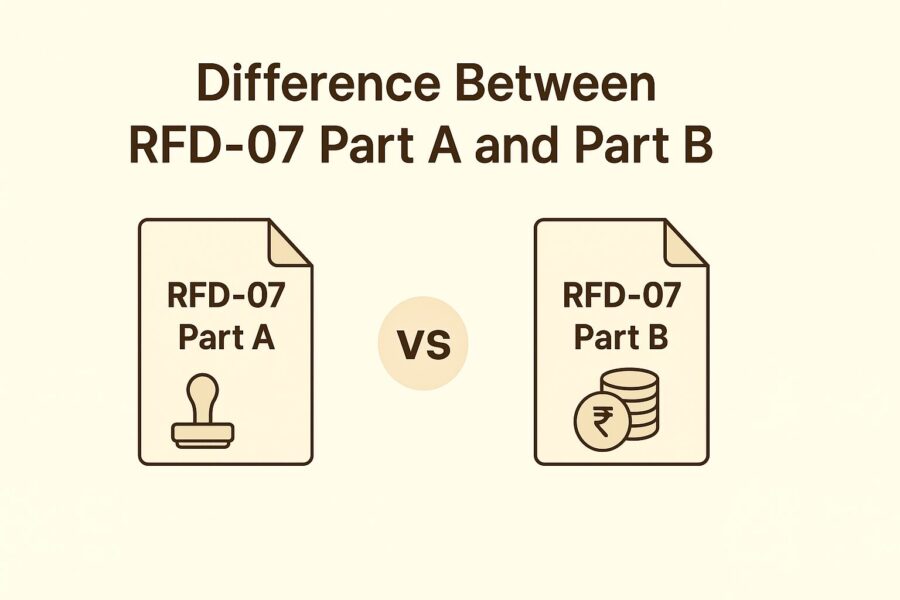
Part A of the RFD-07 form is used when any approved refund amount needs adjustments against any confirmed outstanding demand, which includes any due taxes. This indicates that the government will lower your refund to recover the due amount.
On the other hand, Part B is responsible for temporarily withholding the refunded amount due to certain reasons, such as investigation, review, ongoing appeal or default in filing returns. Upon resolving the issue, the refund amount is released. Both parts thus help in the proper management of the refund processing.
When is Form GST RFD-07 Issued in the Refund Process?
The proper officer issues Form GST RFD-07 after completing the sanctioning process of the refund amount, either in Form GST RFD-04 or Form GST RFD-06. This form is issued only when they determine that it is impossible to pay out the sanctioned amount because of outstanding demands or meeting specific withholding conditions.
Who Issues Form GST RFD-07?
It is the sole responsibility of the concerned jurisdictional GST tax officer to issue Form RFD-07 for further processing and sanctioning of refund claims. However, in some cases, a higher authority such as the Commissioner remains solely responsible, depending on the reasons to consider for withholding.
What Information Does RFD-07 Part A Contain When a Refund is Adjusted?
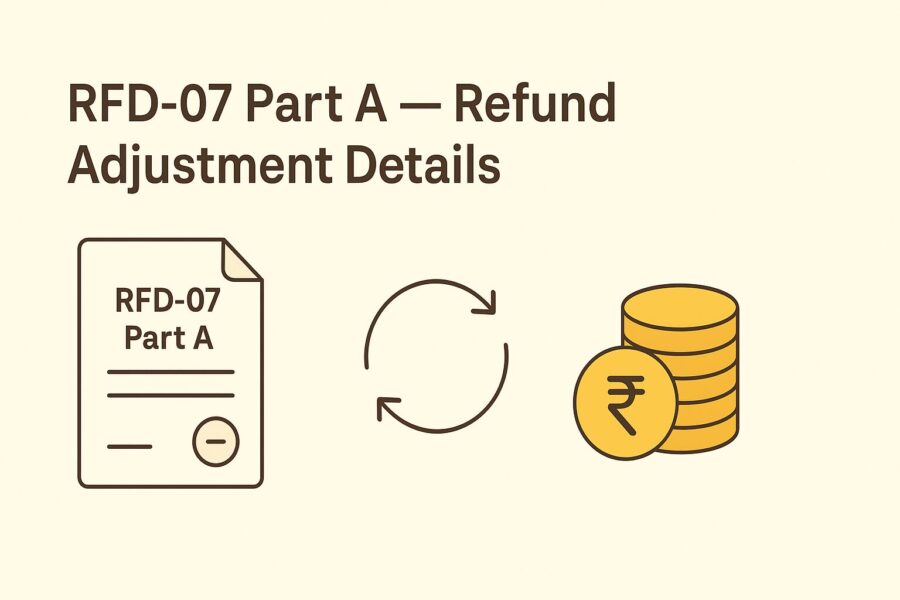
Taxpayers use Part A of Form RFD-07 particularly when adjustments of sanctioned refund amount take place against their existing demand.
When an adjustment of refund takes place, Part A of RFD-07 consists of the following information:
- ARN of the original application for refund
- Details of refund amount to claim, provisionally sanctioned and finally sanctioned
- Reference to the Sanction Order (RFD-04/RFD-06) where sanctioning of refund takes place
- Detailed information of outstanding demand against which there is a refund adjustment, that includes the order number and date
- · Balance refund payable after adjustment (which will be marked ‘NIL’ if adjusted completely)
- · Confirmation about adjustment of the entire sanctioned refund amount against the demand
What Does RFD-07 Part B Inform the Taxpayer About?
RFD-07 Part B informs taxpayers about their withheld status of provisional refund on a temporary basis. It also clearly states reasons for withholding that include ongoing investigations as per Section 54(10) or 54(11) of the GST Act.
What Happens to the Sanctioned Refund Amount if a Form GST RFD-07 Part B is Issued?
With the issuance of Form GST RFD-07 Part B, it indicates that the government has agreed to withhold payment of the sanctioned refund amount. This can happen due to several underlying reasons such as any pending investigation, review, ongoing appeal and others.
Even though the system approves your refund amount, the bank will not transfer money to the respective bank account unless and until they resolve the reason behind the withholding. Once the issue gets cleared and the system cancels your withholding order, the process of refunding resumes and you receive the desired amount. Till then, the amount is on hold.
When Is an Order for Release of Withheld Refund (Part B of RFD-07) Issued?
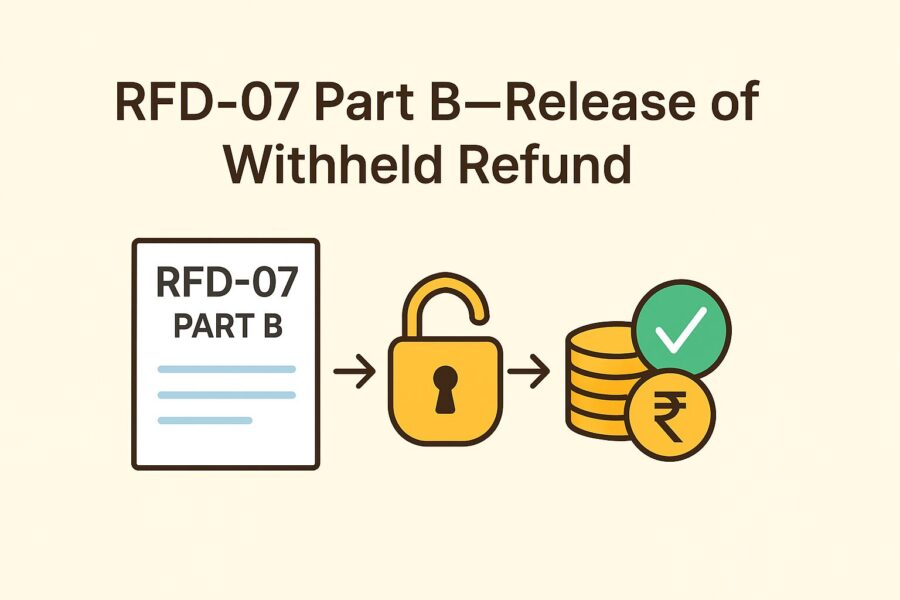
The relevant authority issues an order for release of the withheld refund (Part B of RFD-07) when there is no reason to withhold the refund. This usually occurs when authorities resolve pending cases, upon completion of reviews and when the taxpayer completes the payment of outstanding dues.
Details of Form RFD-07
Form RFD-07 is an order for full adjustment of sanctioned GST refund. This form provides detailed information about the complete adjustment of the refund claim application or withheld. Here is some detailed information about Form RFD-07.
- The form begins with a reference number.
- The body of the notice starts with the application reference number (ARN), acknowledgement number and date.
Further, the form consists of two different parts. Part A denotes a table consisting of details about the sanctioned amount on a provisional basis and subject to adjustments against the outstanding demand.
A total of 6 Points Mentioned in This Table
Let’s explore six important points outlined in the table:
1. Refund Amount/Interest Claimed: This denotes the original amount an applicant claims.
2. Sanctioning of Refund Amount on Provisional Basis (Order No….date)(if applicable): If someone refunded any amount earlier on a provisional basis, then they should mention detailed information about it here.
3. Refund Amount Inadmissible <<reason dropdown>><<Multiple Reasons to Allow>>: If you find any amount of inadmissible refund, then enter all detailed information about it. The tax officer is eligible to provide multiple reasons here.
4. Refund Admissible (i-ii-iii): This is the difference between the above three points.
5. Adjustment of Refund Against Outstanding Demand: If there prevails outstanding demand against the applicant, the same will be adjusted against the claimed monetary refund amount.
6. Refund Balance Amount: This should be NIL always.
Three Parts of Refund Calculation
Part 1: This part mentions details of the sanctioned refund amount.
Part 2: This part entails details of the withheld refund amount.
Part 3: Part 3 provides details of the eligible refund amount.
Conclusion
Form GST RFD-07 plays a key role in the fair and efficient handling of the GST refund mechanism. It allows tax officers to take necessary actions such as adjusting refunds against dues or withholding them temporarily, depending on the taxpayer’s situation. By issuing Part A or Part B, authorities can maintain fiscal discipline and prevent revenue loss.
For taxpayers, understanding this form helps them stay informed about the status of their refund claims and the reasons for any delay. Timely resolution of issues mentioned in RFD-07 can lead to quicker release of the withheld refund amount.
💡If you want to streamline your payment and make GST payments via credit card, consider using the PICE App. Explore the PICE App today and take your business to new heights.
 By
By 








